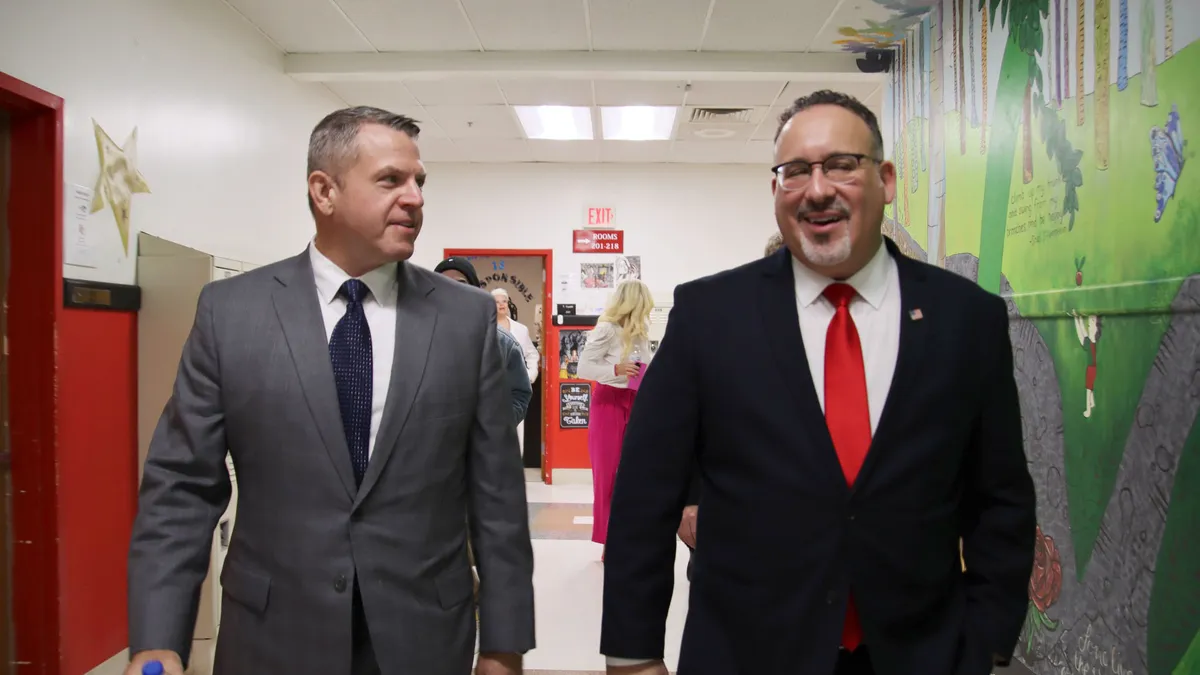The U.S. Department of Education will continue to audit states' and districts' use and oversight of federal pandemic aid through 2025 — and could even extend its reviews beyond that year, according to a spokesperson for the Office of Inspector General, or OIG, which is conducting the reviews.
The office is tasked with ensuring that pandemic-related federal education dollars are properly allocated, spent and monitored. For the most part, it has so far found only administrative issues related to documentation, reviewing and tracking of spending — rather than major issues of fraudulent spending like misuse, theft or other criminal activity.
However, the OIG spokesperson warned that a lack of documentation at the state level makes it difficult to confirm whether costs are allowable, and could result in misspending at the district level.
What "may be 'administrative' issues could be a sign of weak internal controls, and weak internal controls open the door to fraud," said OIG spokesperson Ryan Traher in an email.
Last week, the Education Department watchdog released its second state audit of the American Rescue Plan's Elementary and Secondary School Emergency Relief Fund, known as ESSER.
That audit found Kentucky had put in place a sound process to oversee district federal aid plans and spending for ESSER. However, the agency said the state could improve its process for reviewing district reimbursement requests, such as by requesting district expenditure lists and supporting documentation. Not doing so increases the likelihood that it could overlook compliance concerns, the agency said.
The review was the second OIG audit of state ESSER spending, following one released in September reviewing Washington state's oversight of district ARP spending. The Washington audit also found administrative concerns, including an inadequate review and approval process of district spending plans.
At that time, Washington's Office of Superintendent of Public Instruction said in an emailed statement it was "pleased that the auditors did not find any instances of waste, fraud, or abuse of federal emergency relief dollars."
A third audit is underway for Illinois, and those findings are planned for release in 2024.
While Traher did not share why OIG selects specific entities or programs for audits, he said many factors play into those decisions, including whether programs may be "high risk due to their complexity." He said the office might also look at schools of different sizes to identify whether they have "similar issues and challenges" in carrying out a specific program.
Misspent funds, fraud found elsewhere
While the two ESSER reviews released so far did not find major spending issues, a separate review of the Governor's Emergency Education Relief Fund, or GEER, did. States were meant to spend that money to support ongoing essential education services.
In a 65-page audit released last year, OIG found Oklahoma's lack of oversight led to misspending on items such as Xbox gaming systems, smartwatches and Christmas trees that did not appear to be education-related.
In all, $652,720 was misspent on 3,184 different expenditures, the report said.
Aside from that exception, OIG has not found glaring misuse of the pandemic-related education relief.
These findings stand in contrast to allegations of COVID-19 pandemic federal aid misspending, laundering and fraud related to the Paycheck Protection Program for small businesses. As early as December 2020, some of those loans — which were intended to help small businesses keep their employees on payroll during pandemic shutdowns or contractions — were found to have been spent on personal items like luxury vehicles.
Separately, Chicago Public Schools' inspector general found in an investigation released last month that 14 school employees fraudulently applied for PPP loans and received up to $21,000 each.
These employees "earned six-figure salaries and held positions of authority and trust throughout the district," according to the district’s watchdog. By the time the Chicago agency released its report on Sept. 6, a dozen of those employees had already resigned or been fired, and termination proceedings had begun against the remaining two.











